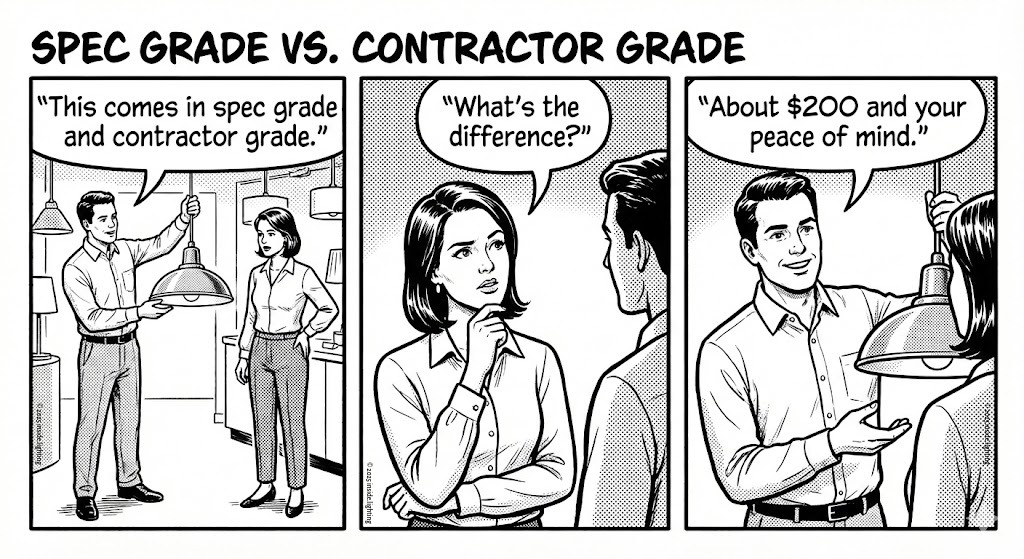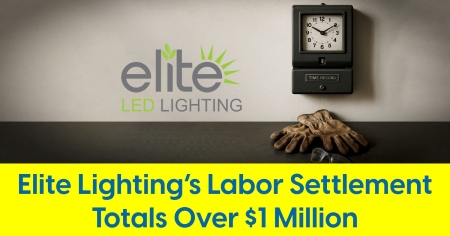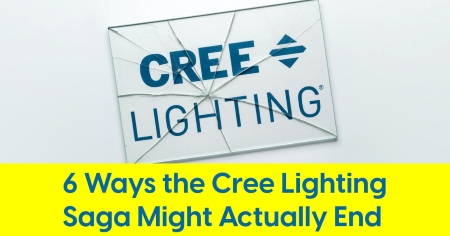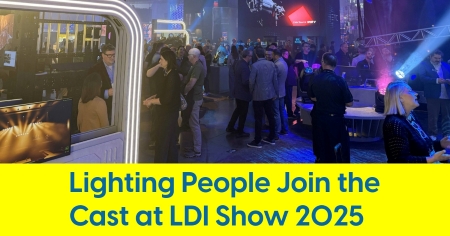February 9, 2024
5 Things to Know: Week Ending February 10
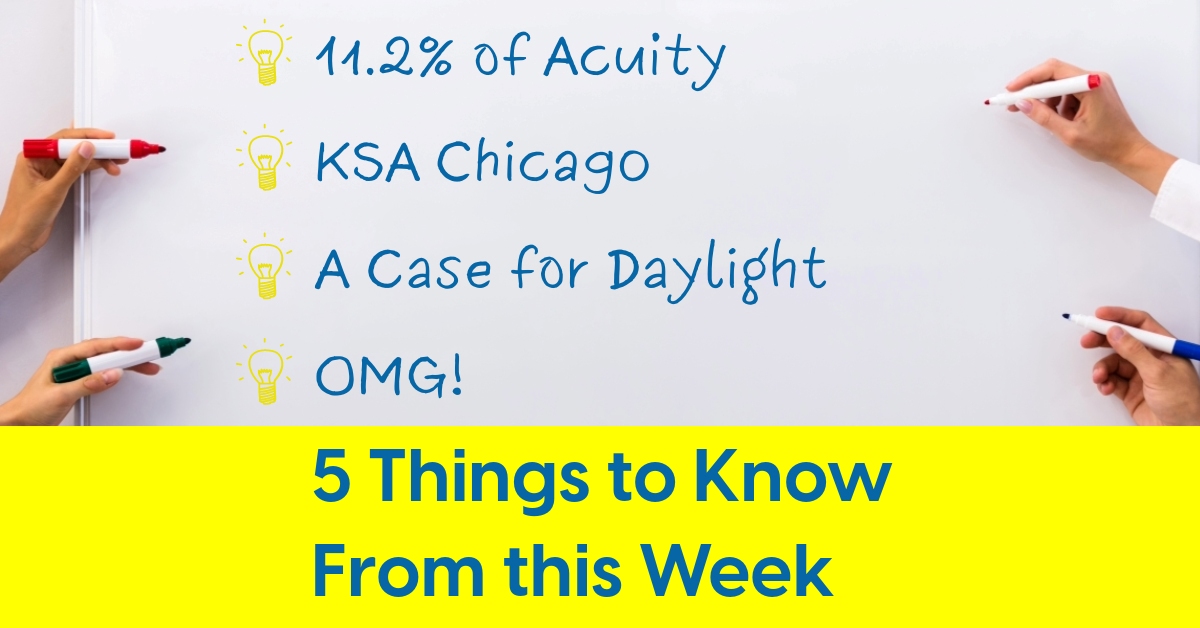
Are things settling down in Chicago's lighting market? Plus, one investor owns a chunk of Acuity Brands.
Here's a roundup of some of the week's happenings curated to help lighting people stay informed.
1. Fidelity now owns 11.2% of Acuity Brands shares
Fidelity Investments continues to hold a significant stake in Acuity Brands, now holding 3,466,829 shares of the lighting and building management firm's 30.82 million shares outstanding. With Acuity Brands' stock currently trading around $240 per share, this makes Fidelity's investment worth approximately $832 million.
The disclosure, made through Acuity Brands’ SEC Schedule 13G filing on Friday, indicates that Fidelity's ownership of Acuity Brands shares is a passive investment, suggesting no intention to seek control or significant influence over the company's operations. This type of filing is commonly used when entities acquire a significant portion of a company's shares without aiming for an active role in its management.
2 . KSA Chicago updates
Chicago's lighting market has seen significant attention in recent years, and a recent development has added to a sense of increasing calm and stability.
Jim Williams, the longtime leader of KSA Lighting and Controls, which is recognized as the largest lighting agent in Chicago, previously announced his plan to transition leadership to new principals and to step down from his chairman role by March 31. However, Williams' departure from the company occurred earlier than expected, with his exit finalized on January 31.
Williams has gained increased attention in recent years due to a past legal battle with the now-defunct competitor Force Partners and for being the spouse of the owner of startup agency, The Lighting Digest, which represents Cooper Lighting Solutions and competes with KSA and all of its represented manufacturers including Acuity Brands.
Keith Wittenbrink and Jim Maucieri are the recently appointed principals of KSA Lighting and Controls. In a move that signals a return to tradition, the agency recently announced the comeback of its popular House of Blues trade show and music shindig. Scheduled for October 10, 2024, this event marks the first time KSA will host its renowned House of Blues party since before the pandemic.
If current trends in agent trade shows persist, Chicago will possibly host three consecutive months of large-scale agent events this fall: PG Enlighten in September, KSA in October, and The Lighting Digest in November.
3. Lisa Heschong’s Case for Daylight
In a recent article in Buildings & Cities, the diminishing access to daylight at street level, especially in urban areas with high population densities, is spotlighted as a significant issue.
The piece highlights the contrast between the abundant daylight available at the tops of high-rises and the limited sunlight reaching pedestrians and residents at street level. It delves into the necessity of incorporating adequate daylight provision into city and building design, considering the implications for public health and well-being.
Lisa Heschong, an author, architectural researcher and a fellow of the Illuminating Engineering Society, advocates for the recognition of daylight as a fundamental human right, akin to the World Health Organization's list of essentials like clean air and safe shelter. The article highlights the multitude of health benefits associated with regular exposure to natural daylight, including improved mental health, cognitive function, and reduced risk of diseases. It calls for a reevaluation of urban and architectural practices to ensure that access to natural light is not compromised, especially as the world's population continues to grow and urban spaces become more densely populated.
4. LED Streetlights Costly Headache for Seattle Suburb
As reported by Seattle Times, Gig Harbor, Washington, is grappling with a costly setback after most of the 715 LED streetlight bulbs installed throughout the city failed to work, despite the city's $457,600 investment aimed at reducing energy consumption and maintenance costs.
The initiative, detailed by Mayor Tracie Markley and public works director Jeff Langhlem, was part of a 2017 project to replace less efficient metal halide lamps with LEDs, which were expected to have a longer lifespan and higher energy efficiency. However, the bulbs, supplied by Daylight Technology USA, were found to have defective components limiting their operational life to just five years, far short of the 20-year life expectancy and 10-year warranty promised.
The city is now in the throes of removing and returning the malfunctioning bulbs to the vendor for warranty repairs, a process complicated by shipping costs and logistical challenges. Langhlem revealed that the city is continuously sending batches of around 40 failed lamps back to the vendor, with replacements taking three to five weeks to arrive.
While the vendor is covering repair and replacement costs, the city bears the shipping expenses. Amidst these challenges, discussions with the vendor have involved the city's legal team, hinting at possible legal actions. Meanwhile, Langhlem noted that over 800 LED lamps from a different supplier are functioning well, highlighting a stark contrast in reliability between the two sets of bulbs.
5. Current Chemicals
Current Chemicals, a division less frequently featured in our lighting-focused articles, is part of the $922 million company Current. It specializes in high-purity luminescent materials and boasts over 70 years of experience.
Current Chemicals has teamed up with Seaborough B.V., an Amsterdam-based LED technology firm, to industrialize and market Seaborough's EuroLED® technology, a new red phosphor technology aimed at enhancing the efficiency of warm white LEDs. This collaboration marks a significant advancement in LED technology by utilizing Eu3+ phosphors for the first time, promising over 15% higher efficacy for warm white LEDs compared to those using conventional phosphors.
